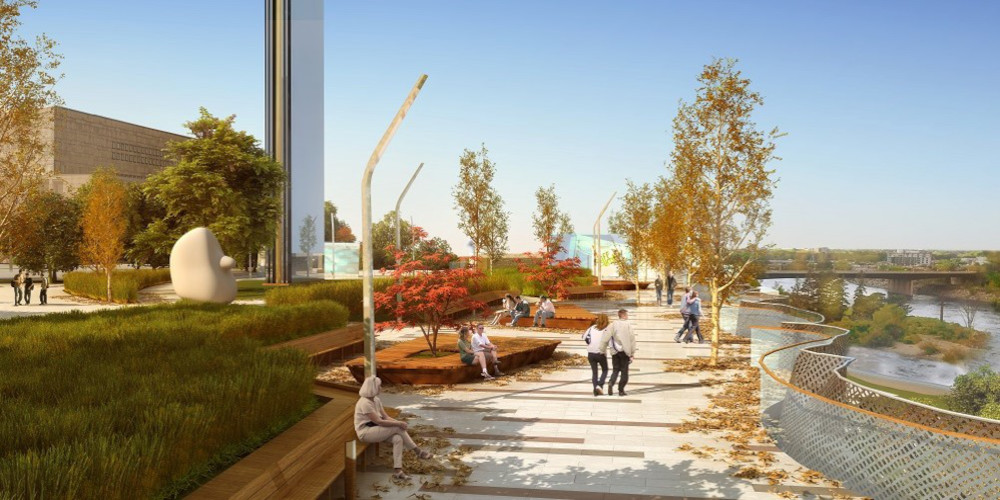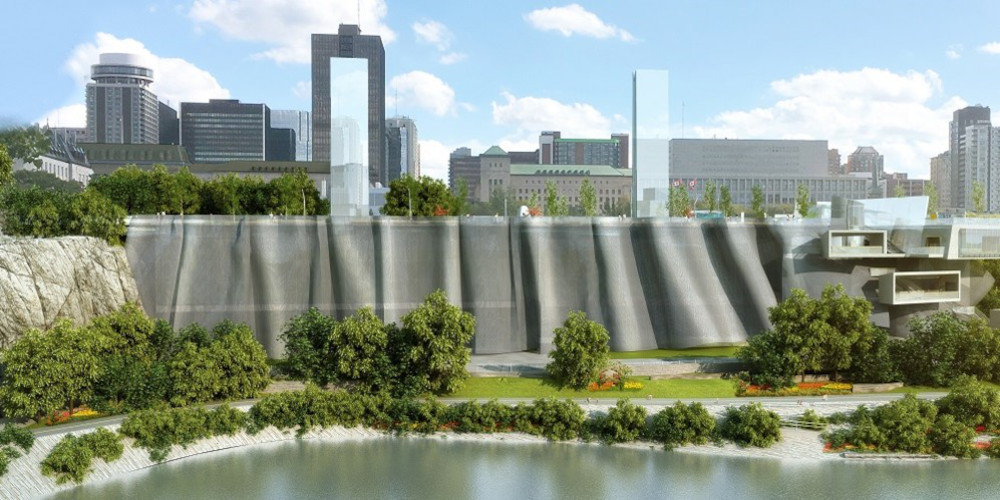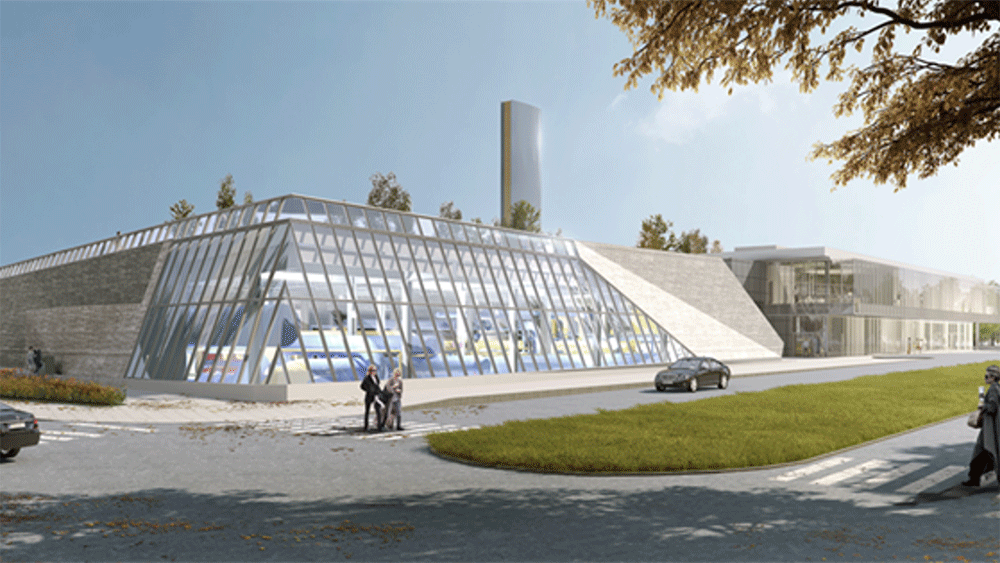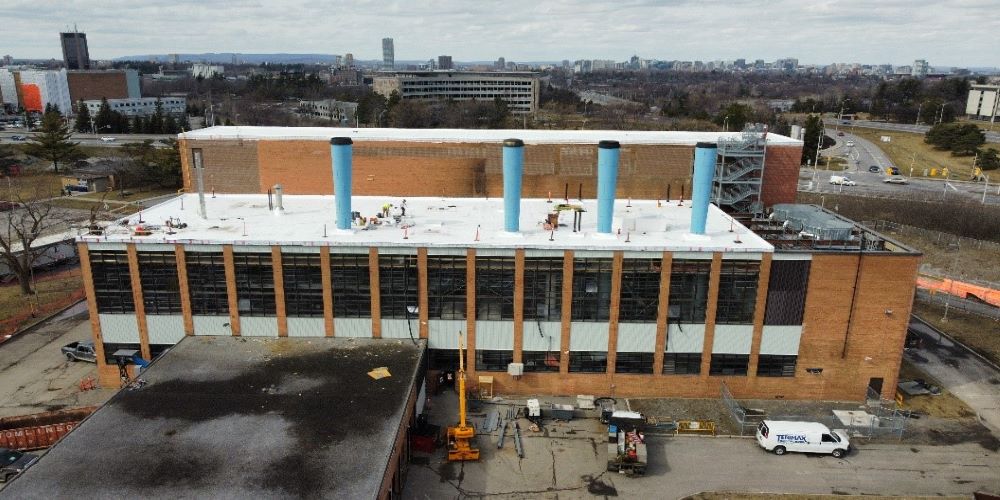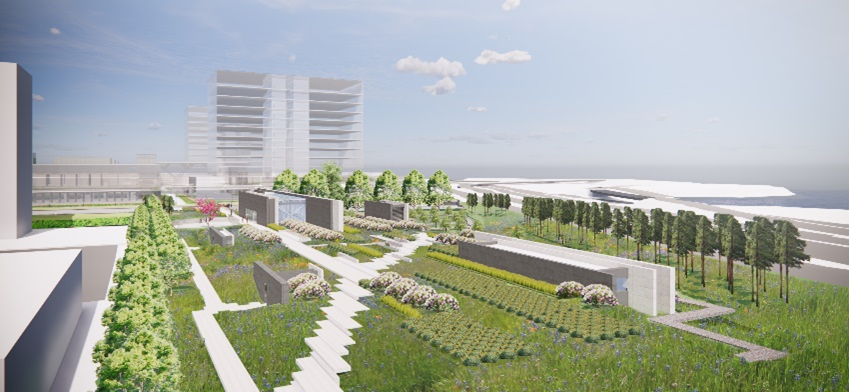Low carbon in the National Capital Region’s buildings
From: Public Services and Procurement Canada
Learn how the Energy Services Acquisition Program (ESAP) plans to help the government meet its goal of reaching carbon-neutral operations by 2030.
On this page
About the Energy Services Acquisition Program
In Ottawa, there are 80 buildings that are served by the ESAP energy system, including the Parliament buildings. The current heating and cooling system was built 50 to 100 years ago and is out of date. The system connects to 4 energy centres using more than 14 kilometres of underground piping. Many parts of the plants are unusable. We are modernizing the energy system to cut greenhouse gas (GHG) emissions and save money. Operation and maintenance of the energy system will be maintained by Innovate Energy.
Video: Modernizing the district energy system
Transcript of Modernizing the district energy system
Start of video
Music starts
(Text on screen: Public Services and Procurement Canada)
[Video opens with a moving shot of the City of Ottawa skyline. The Peace Tower is at the forefront with several other buildings in the background.]
[The shot is taken from water level. The Cliff Energy Centre, which is under construction, is in the background. Other downtown buildings, including the Supreme Court of Canada, are also in the shot. The buildings reflect in the water.]
[The shot is taken from across the Ottawa River and features Parliament Hill and the green escarpment on a summer day. The Centre Block, West Block and other buildings are in the background.]
Public Services and Procurement Canada is committed to taking action on climate change by modernizing how we heat and cool federal buildings, like those on Parliament Hill.
[A shot of the current Cliff heating and cooling plant surrounded by a fence.]
[A moving shot of the City of Ottawa skyline. Multiple buildings are in the shot. There is also a crane in the sky and a bus driving down the street.]
The district energy system currently services 80 federal buildings in the National Capital Region.
[A shot of the Confederation Heights Energy Centre. The building is mainly brown and grey with large windows. There are six blue chimneys at the top of the building.]
[A shot of the pipes and systems used to heat and cool federal buildings.]
[A closeup shot of the panel and screen to heat and cool federal buildings.]
Through the Energy Services Acquisition Program, we are building a safer, more cost effective, and energy efficient system that will be carbon neutral by 2030.
[A blue, aerial map of the cities of Ottawa and Gatineau appears on screen. Four different photos pop up to indicate the location for the new energy centres. The top image shows a rendering for Modernized Gatineau. The next to appear is a rendering of Cliff. A rendering of the Tunney’s Pasture centre appears on screen, followed by a photo of the heating system inside Confederation Heights.]
(Text on screen: Gatineau, Ottawa, Modernized Gatineau, Cliff, Tunney’s Pasture, Confederation Heights)
It will include four modernized energy centres that together, will create one of the largest District Energy Systems in North America, reducing greenhouse gas emissions.
[A rendering of a park with big trees, grassy areas. There is a glass building on the left side of the image. There are people sitting and walking in the park.]
(Text on screen: Design concept)
In addition, these new constructions will bring accessible greenspaces to surrounding communities.
[The image of the Cliff Energy Centre starts in black and white and slowly dissolves into a colourful rendering of the centre. The rendering features a large, curved wall. It also showcases the theatre boxes which overlook the Ottawa River.]
(Text on screen: Cliff Energy Centre)
Located near the Parliament Buildings, the Cliff Energy Centre is designed to be a destination landmark.
[The rendering showcases the large, curved wall of the Cliff Energy Centre. There is a multi-use pathway below the wall. There are cyclists and pedestrians using the path. Large trees fill the area.]
The centre, which will heat and cool many federal buildings in the National Capital Region, is currently being constructed.
[The rendering shows a public park on the top platform of the energy centre. Some people are sitting on a bench, while others are walking. The Ottawa River is on the right, as well as buildings in Gatineau.]
[The rendering showcases the three large cascading theatre boxes of the Cliff Energy Centre.]
It will include a public park on the escarpment’s upper plateau, as well as cascading theatre boxes with spectacular views of the area.
[The rendering shows the stairs and elevators that can be used to access the multi-use pathway below.]
An elevator and stairs will provide access to the Ottawa River’s multi-use pathway.
[The rendering shows the visitor education centre located at the top of the energy centre. There are multiple signs as well as other public art structures and fountains.]
Visitors will be able to learn about the district energy system through a new Visitors’ Education Centre showcasing technological innovations.
[The image of the Tunney’s Pasture Energy Centre starts in black and white and slowly dissolves into a colourful rendering of the centre. The rendering features a large public park. There is a tall silver chimney in the background. There are many people walking along the paths in the park which is full of gardens and trees.]
(Text on screen: Tunney’s Pasture Energy Centre)
The new Tunney’s Pasture Energy Centre is set to become one of the new faces of clean energy in Canada.
[The rendering gives a wide shot of the Tunney’s Pasture Energy Centre. The building features sloped glass walls. The silver chimney is in the background. There are multiple trees and open areas.]
It will reinvigorate this former parking lot with a public roof garden built over the facility.
[The rendering shows the sloped glass walls of the energy centre. There are cars parked out front and people are crossing the street.]
With its sloped glass walls, visitors will have a clear view of the energy centre's inner workings from the outside.
[The rendering shows an aerial shot of the centre and public park. The Ottawa River and treed areas are in the background.]
Improved connections for walking and cycling will provide strong sight lines of the Ottawa River.
[The construction image of the Modernized Gatineau Energy Centre starts in black and white and slowly dissolves into a colourful rendering of the centre. The rendering features a large wall with the name of the centre on it. There are people making their way to the main entrance of the building. There is a car parked out front. Trees and gardens line the area.]
(Text on screen: Modernized Gatineau Energy Centre)
Across the river in Quebec, the new Modernized Gatineau Energy Centre will provide carbon-neutral energy, community gardens, and a public park that can be enjoyed year-round.
[The rendering shows a wide shot of the site. There are a couple of buildings spread out throughout the large public park. There are multiple gardens and trees.]
[The moving rendering takes us to the front entrance of the building.]
[The image of the pumphouse starts in black and white and slowly dissolves into a colourful rendering of the site. The rendering is an aerial shot of the area. The pumphouse is brown and mainly built below the ground. There is a park above it. The rendering shows that the pumphouse is next to a road on a bridge, as well as by the Ottawa River shore.]
To support the Modernized Gatineau Energy Centre, a new pumphouse will be located along the Ottawa River’s north shore.
[The rendering showcases the wooden pathway below the pumphouse. There are people walking on the path that is lined with trees and plants.]
It will provide the energy centre with a green and renewable source of cold water for its cooling services.
[The rendering shows more detail of the pumphouse. The structure is mostly brown and grey and has a curved design above. There is a path in front of it and lots of trees and grassy areas around the building.]
The facility will mostly be built underground, with a green roof and native trees and plants to beautify the landscape.
[The image of the Confederation Heights Energy Centre starts in black and white and slowly dissolves into a colourful rendering of the inside of the centre. The rendering features pipes and the system used to heat and cool federal buildings.]
(Text on screen: Confederation Heights Energy Centre)
[The video shows large white panel boxes used for heating and cooling.]
The Confederation Heights Energy Centre will be renovated to integrate modern renewable technology including three new boilers producing low temperature hot water and three new electric chillers.
[The video cuts to a wide shot of the construction site for the pumphouse along the Ottawa River. In the background, there are large buildings, a crane and a bridge. The trees are colourful and indicate that it is the fall season.]
[This is a shot of the pumphouse under construction along the Ottawa River. There are large steel beams in place.]
[The rendering shows the Tunney’s Pasture Energy Centre at dusk. The lights are colourful inside the building. Multiple people are standing outside the building.]
The design and construction work to modernize the district energy system is expected to be completed by 2026 .
[A greyish white filter appears over the image of the energy centre. A website appears on the page.]
(Text on screen: nationalcapitaldistrictenergy.ca)
(Text on screen: Artist renderings are preliminary design concepts and are subject to change.)
For more information, visit nationalcapitaldistrictenergy.ca
(Text on screen: Check us out: facebook.com/PSPC.SPAC, instagram.com/pspc_spac, twitter.com/pspc_spac, youtube.com/PWGSCanada)
[Music stops]
(Text on screen: ISBN 978-0-660-49599-6, Catalogue P4-122/2023E-MP4)
(Public Services and Procurement Canada signature)
(Canada Wordmark)
End of video
How we will modernize
In partnership with Innovate Energy, we will be building and modernizing 4 new energy centres to create some of the most sustainable cutting-edge energy centres in North America.
The new energy centres will use a district energy system (DES). A DES is a set of central plants that heats buildings with hot water or steam and cools buildings with chilled water. This uses less energy and is more efficient than having equipment in each individual building.
Modernizing the National Capital Region (NCR) DES will be completed in 2 stages.
Stage 1
Timeline: 2019 to 2026
Installing modern technologies
Installing modern technologies will make the centres safer and more energy efficient. Current and past projects will reduce GHG emissions by about 63% compared to 2005 baseline emission levels.
Converting to low-temperature hot water
The current system provides heat by steam and hot water. We will convert the centres from using the high-temperature steam system to using a more energy-efficient low temperature hot water system. The new system will use less energy and produce fewer GHGs. Instead of circulating steam through the pipes, the system will use low temperature hot water to heat the buildings connected to the network. This is safer and more efficient.
Switching to electric chillers
The Ottawa River will help chill the water, which will cool buildings connected to the network. This is a more sustainable alternative to the current system. Using the river water will cut electricity use by 30% and reduce environmental impacts.
Installing Smart Building technology
We will use Smart Building technology to find ways to produce energy more efficiently.
Results of stage 1
Once this stage is complete, all connected buildings will be changed to the new DES. The Cliff, Tunney’s Pasture and Gatineau Energy Centre will be newly built, and the Confederation Heights Energy Centre will be renovated.
ESAP will carry out additional work under the User Building Conversion Plan (UBCP) to ensure that buildings are ready to connect to the modernized system.
Stage 2
Timeline: 2021 to 2030
Alternative sources of energy for the future
In this stage, we are exploring replacing natural gas with low-carbon fuel sources, such as:
- clean electricity
- renewable natural gas
- electric boilers (non-GHG-emitting sources)
- river water pump (using water from the Ottawa River to assist in the cooling process)
- waste heat recovered from chillers
- geo exchange (using the ground like a battery to store heat in the summer so that it can be used in the winter)
- other innovative low-carbon net-zero technologies
Using these sources is expected to reduce GHG emissions by an additional 28%, which will bring our DES to carbon neutrality.
Milestones achieved
- A public-private partnership (P3) was put in place to manage the modernization
- This is being achieved through a long-term contract
- Commercial opportunities were posted on buyandsell.gc.ca at various stages of the project
- March 2017: We published a letter of interest (EP-635-173247/A) to inform industry of upcoming contracting opportunities
- August 31, 2017: We published the request for qualification (ES635-173247/B) to evaluate interested companies and consortia on their experience in projects of similar size and complexity
- We used this to develop a short list of 3 potential bidders to continue to the request for proposals stage
- 2017 to 2019: We completed pilot testing and feasibility studies for the Deeper Greening Program (DGP)
- For more information, contact the Public Services and Procurement Canada (PSPC) Energy Service Modernization (ESM) Project at mse.esm@tpsgc-pwgsc.gc.ca
- Early 2018: We shared the request for proposals with qualified bidders and set out the conditions and specifications of the project
- The qualified bidders submitted binding technical and financial proposals
- Spring of 2019: We finalized a contract with Innovate Energy, the P3 partner for the project
- 2020: The DES handover transition ended, and design and construction for the ESM Project began
- 2022: Program approval was received for the DGP
- August 2022: The DGP strategic environmental assessment was completed
- For a copy of the summary of the key results of this assessment, please contact PSPC’s ESM Project at mse.esm@tpsgc-pwgsc.gc.ca
Next steps
- 2022 to 2030: Design and construction of new and retrofitted energy centres
- 2024: Finalize the building conversions
- 2026: Finish modernizing the systems
- 2029: Complete the DGP
- 2030: Energy services will be carbon neutral
Photo gallery
Click on the image to view a larger version.
Benefits to Canadians
ESAP is committed to reducing GHG emissions and to leading by example by greening the Government of Canada’s own operations. ESAP will modernize the DES that heats and cools several federal and non-federal buildings. This will in turn reduce GHG emissions, save money and improve overall safety.
By modernizing this system, we will contribute to climate change commitments by transitioning to a low-carbon economy and by stimulating the clean technology sector.
Contract details
ESAP signed an agreement with Innovate Energy, a P3 partner, for the modernization of the DES in the NCR.
Innovate Energy is a consortium of partners working on the project. Partners include:
- PCL Constructors Canada Inc.
- PCL Investments Canada Inc.
- EQUANS Services Inc.
- Black & McDonald
The engineering professional services firm WSP is also participating, as well as bbb architects.
- Value
-
$1.3 billion to design and build
$2.1 billion for maintenance
- Total value
- $3.4 billion
- Timeline
- 2019 to 2055
- Project status
- In progress
News about the program
- June 9, 2022: Construction set to begin on new energy centre in Gatineau
- June 4, 2019: Government of Canada invests in cleaner energy system for the National Capital Region
- August 31, 2017: Government of Canada launches procurement process for Energy Services Acquisition Program
- July 18, 2017: Government of Canada committed to modernizing heating and cooling plants in National Capital Region
Related links
- Federal Sustainable Development Strategy (Environment and Climate Change Canada)
- Pan-Canadian Framework on Clean Growth and Climate Change
- Greening Government Strategy (Treasury Board of Canada Secretariat)
- Energy consumption in commercial and institutional buildings in Canada (Energy and Natural Resources Canada)
- Smart Buildings initiative (PSPC)
- Green buildings (PSPC)
- Government of Canada invests in cleaner energy system for the National Capital Region
- Innovate Energy (private partner)
- Greening Government Strategy: A Government of Canada Directive (Treasury Board of Canada Secretariat)
Contact us
- Date modified:
